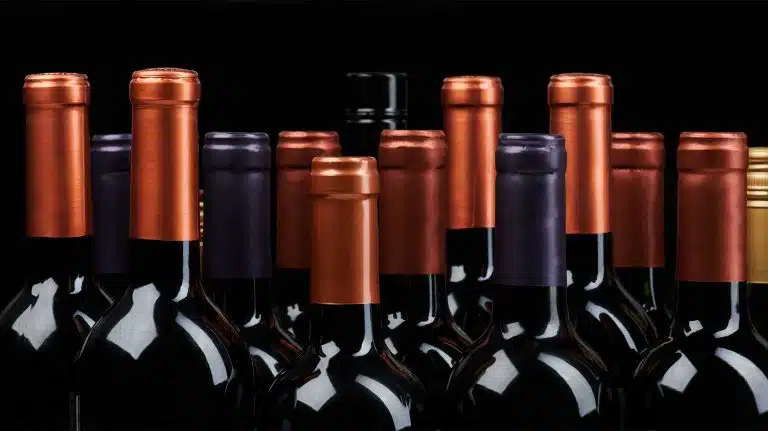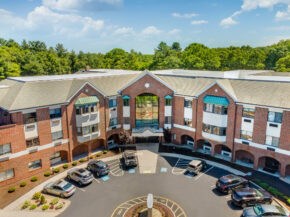How Many Drinks Are In A Bottle Of Wine?
- How Much Alcohol Is In A Bottle Of Wine?
- Effects Of Drinking A Bottle Of Wine
- Risks Of Drinking A Bottle Of Wine

A serving size for most table wines is about 5 ounces. Most standard bottles of wine contain about 5 servings per bottle. The Centers for Disease Control and Prevention (CDC) recommends a limit of one drink per day for women and two drinks per day for men.
Drinking more than the recommended number of standard drinks increases the risk of harmful effects, including intoxication and alcohol poisoning. Regular consumption of large quantities of wine may increase the risk of long-term effects like liver disease and cancer.
How Much Alcohol Is In A Bottle Of Wine?
Alcohol by volume (ABV) is a unit of measurement used to determine the percentage of pure alcohol in an alcoholic beverage. For example, red wine may contain around 12% alcohol by volume.
This measurement is useful in determining how many ounces of alcohol, depending on the beverage, contribute to one standard drink.
In the United States, one standard drink is any alcoholic beverage containing 14 grams of pure alcohol.
There are 14 grams of pure alcohol in 5 fluid ounces of wine, which is about 12 % ABV. To compare, 14 grams of pure alcohol is also found in:
- 3-4 ounces of fortified wine, like sherry (17% ABV)
- 8-9 ounces of malt liquor (7% ABV)
- 12 ounces of regular beer (5% ABV)
- 1.5 ounces of hard liquor (40% ABV)
A typical 750 ml bottle of wine is equal to roughly 25 ounces, which amounts to about 5 glasses of wine per bottle. However, bottle sizes and the alcohol content may vary between types of wine.
Red, white, and sparkling wine typically have a lower alcohol content than fortified wines, which contain hard liquor.
Effects Of Drinking A Bottle Of Wine
Binge drinking is excessive alcohol consumption that raises a person’s blood alcohol content (BAC) to 0.08% or more. A BAC of 0.08% is also the legal limit to drive in the United States.
The number of alcoholic drinks it takes to increase BAC depends on gender, metabolism, and other factors. However, it typically takes about 4-5 drinks in a two-hour time span to significantly raise BAC.
Depending on the amount of alcohol consumed and how quickly you drink, you may experience the following effects of alcohol:
- mood changes
- lightheadedness
- exaggerated behaviors
- impaired motor skills
- impaired judgment and memory
- difficulty talking or walking
- nausea/vomiting
- loss of consciousness
Alcohol Poisoning
Depending on tolerance, metabolism, and body composition, drinking an entire bottle of wine can be dangerous. Consuming large amounts of alcohol in a short period of time can result in alcohol poisoning.
Alcohol poisoning is a potentially life-threatening condition that can cause severe confusion, loss of consciousness, and trouble breathing. If you notice signs of alcohol poisoning, seek medical attention immediately.
Risks Of Drinking A Bottle Of Wine
Heavy drinking, regardless of the type of alcohol, can be detrimental to mental and physical health. Consuming a bottle of wine can significantly increase BAC and lead to severe impairment.
This may cause severe changes in behavior, including mood swings, poor judgment, and high-risk activities. Heavy alcohol consumption can also cause significant impairment to motor function, resulting in difficulty talking, walking, and standing.
Consuming a bottle of wine increases the risk of the following:
- car accidents
- injury to self or others
- alcohol poisoning
- unprotected sex
- memory impairment
- alcohol dependence and alcohol use disorder (AUD)
Long-term alcohol abuse can lead to cognitive problems and increases the risk of heart problems.
Cognitive Impairment
Alcohol can impact the way your brain directs important functions, including learning and memory. Immediately after consuming alcohol, you may have slurred speech or difficulty walking.
After drinking a bottle of wine, you may be confused, disoriented, and experience a blackout. A blackout is a memory lapse that cannot be recovered.
Heart Disease
Some research has found that red wine in moderation may have some cardiovascular benefits, compared to other types of alcohol.
Red wine contains compounds that may relax blood vessel walls and reduce the risk of low-density lipoproteins (LDL), which is known as “bad cholesterol”.
However, the risks of heavy drinking outweigh the benefits of moderate drinking.
Heavy drinking increases the risk of the following heart conditions:
- weakened heart muscle
- irregular heartbeat
- stroke
- high blood pressure
Even if you drink moderately, you may still be at risk for the damaging effects of alcohol. Even one or two drinks can be harmful if you take medication that interacts with alcohol. Your general health and the health of your liver can also influence how your body processes alcohol.
If you or a loved one struggles with alcohol abuse, contact us today to learn about treatment options.
Written by Ark Behavioral Health Editorial Team
©2024 Ark National Holdings, LLC. | All Rights Reserved.
This page does not provide medical advice.
Centers For Disease Control And Prevention (CDC) - Binge Drinking
Centers For Disease Control And Prevention (CDC) - Dietary Guidelines For Alcohol
National Institute On Alcohol Abuse And Alcoholism (NIAAA) - Alcohol's Effects On The Body
Harvard School Of Public Health - Is Wine Fine, Or Beer Better?
National Institute On Alcohol Abuse And Alcoholism (NIAAA): Rethinking Drinking - What's A Standard Drink?
Questions About Treatment?
Ark Behavioral Health offers 100% confidential substance abuse assessment and treatment placement tailored to your individual needs. Achieve long-term recovery.
100% confidential. We respect your privacy.
Prefer Texting?
Our friendly support team is here to chat 24/7. Opt out any time.







 Learn More
Learn More








